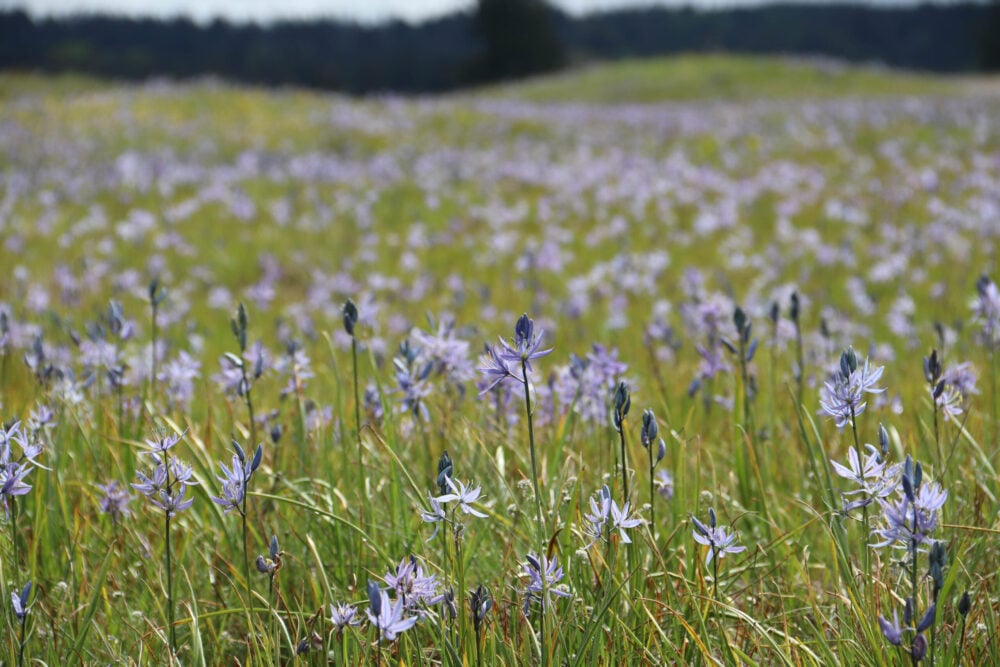
And, the 2024 Design Futurist Award Winners Are…

Contributor
- Topics: Inspired Gardens and Design
Fall 2024
2024 Design Futurist Award Winners
Pacific Horticulture’s Design Futurist Award, established in 2023, generates accessible, replicable design solutions for gardeners and professionals, taking them behind the scenes with today’s most influential and innovative designers. The Award addresses the gap in recognition of Western garden designers who work on modest-scale ecological and climate-resilient garden design. These types of designs are proving to drive community change and have positive environmental impacts. We’re excited to share this year’s winners with you.
About the Award
The Design Futurist Award collects the very best, most exciting examples of problem-solving by visionary designers and regional plantspeople. The Award exposes the “inner beauty” of landscapes built to conserve plants and wildlife, treat our water and soil as precious, and hold the well-being of human beings at the center of our gardened environments.
The Award calls for garden designs that are easily replicable, are modest in size, or have been designed for intimate neighborhood community use. A jury of highly experienced horticulturists, landscape designers, and landscape architects evaluated submissions seeking gardens aligned with five of our core themes: Growing for Biodiversity, Drought and Fire Resilience, Nature is Good for You, Garden Futurist, and Sustainable Gardening.
The Top Prize award embodies several themes in an exemplary way, while Honors and Merit are given to gardens creating the best examples of a single theme. The contest welcomed gardens of all sizes. The judging was blind—the designer and firm names were removed from submissions.
The winning landscapes range from highly designed projects to single gardeners transforming their home or unused community land. Each is rich with inspiration for gardening toward a resilient future.
TOP PRIZE WINNER
Fuller Initiative Land Lab

Eugene, Oregon
Designer: Michael Geffel, Lab Director & Design Principal, LNDLAB
Installation: 2023
Size: Over 10,000 square feet (over 930 square meters)
Budget: $50,001 – $100,000
Chosen Theme(s): Growing for Biodiversity, Drought & Fire Resilience, Nature is Good for You, Garden Futurist, Sustainable Gardening


About Fuller Initiative Land Lab
This former gravel quarry and landfill has been envisioned by designer Michael Geffel as an evolving “land lab.” This public garden and instructional space acts as a living experiment in community restoration using innovative sustainable maintenance practices. Encompassing the popular Ruth Bascomb Riverbank trail on the Willamette River and near the University of Oregon stadium, the space sees regular foot traffic. Creative techniques—including a “drift” machine-mowing technique that allows grasslands to grow undisturbed for years at a time, as well as a “wave” fence and linear sheet mulch to protect a customized pollinator seed mix—streamline maintenance in ways that make restoration more accessible. Because there’s no water on site, the garden employs drought-tolerant, climate-resilient plants. The native wildflower bloom has become an annual local sensation.
Why They Loved It
Judges said this garden “integrates innovative design and material uses, ecological resilience, sustainable practices, and community engagement into an exciting, forward-looking landscape” and delivers a “scalable precedent for other land-based practices by demonstrating how design through maintenance can build meaningful novel landscapes.”
HONORS WINNERS
Coast Ridge Home Landscape

Portola Valley, California
Designer: Scott R. Lewis, Landscape Architect & Principal, Scott Lewis Landscape Architecture
Installation: 2020
Size: Over 10,00 square feet (over 930 square meters)
Budget: $101,000–$250,000
Chosen Theme(s): Growing for Biodiversity, Sustainable Gardening


About Coast Ridge Home Landscape
This home garden, owned by a horticulturist, abuts a 90-acre oak woodland preserve. Landscape architect Scott R. Lewis used native plantings to create a contemporary compound that “welcomed wildlife, provided habitat and offered an opportunity to experiment with the diversity of regional plantings.” Rainwater harvesting, permeable surfaces, drought-tolerant plants, and a greywater irrigation system result in landscape irrigation that uses only 33 percent of its county-mandated allotment. A wildflower-bedecked roof garden blends the buildings into the rolling landscape at every level.
Why They Loved It
Judges called it a “beautiful project” offering “year-round structure and habitat” while “authentically fitting into its surroundings.”
Wilderness in the City

Los Angeles, California
Designer: Stephanie Lin, Principal, and Neive Tierney, Principal, Nectar Landscape Design
Installation: 2022
Size: 5,001–10,000 square feet (465–929 square meters)
Budget: $100,001–$250,000
Chosen Theme(s): Nature is Good for You, Garden Futurist


About Wilderness in the City
Montecito Heights, a neighborhood near downtown Los Angeles, is called the “Wilderness in the City” because it includes the regional Audubon Center and nature reserve. In a compact urban garden, Stephanie Lin and Neive Tierney created a restorative oasis comprising a deck, lounge area, shed, and a birding hut and play area for the family’s children—all nestled in coastal sage scrub and pollinator-friendly plants. Anticipating the heat island effect, designers retained existing lemon and acacia trees while adding redbuds, toyons, and madrones for spaces that keep their cool year-round.
Why They Loved It
Beyond simply delivering programmatic elements embodying the themes, judges said this garden crafted an “exceptional experience” that would be most conducive to helping visitors appreciate the value-based content.
Read Next: Garden Design for the Greater Community, By: Leslie Davis
Gardens have the power to bring us together. Discover seven public-facing, community-engaging gardens harnessing that power. Three of them are Design Futurist honors award winners: a Kinship Garden on San Juan Island, Washington, a San Francisco alley-turned-butterfly oasis, and a pollinator bike path energizing Davis, California. They show the peak of what’s possible – what can you do with an abandoned patch of earth? >>Read More
MERIT WINNERS
Going Street Commons

Portland, Oregon
Designer: Caitilin Pope Daum, Principal and Lead Designer, Studio Wild Landscape Architecture
Installation: 2020
Size: Over 10,00 square feet (over 930 square meters)
Budget: $101,000–$250,000
Chosen Theme(s): Growing for Biodiversity, Nature is Good for You, Sustainable Gardening
Going Street Commons is a community of net-zero homes, designed to passive-house standards, conceived as a model for livable, sustainable, medium density housing. Studio Wild was engaged to develop a site design that expanded on these high-performance goals in the landscape, demonstrating uplifting, highly livable, habitat-rich urban design. The project sits in Portland’s Cully neighborhood, known for large undeveloped lots and sidewalk-less streets. It has a rural feel, but retains the urban efficiency of proximity to services, transit routes, and neighborhood schools. Studio Wild collaborated with architects on the layout of buildings and key site features to create higher density living that blend with the rural feel of the neighborhood.
Why They Loved It
Judges described the project as a “Lovely garden serving needs of all ages in multihousing community.” noting the use of, “Raised vegetable beds to create a community garden”
Good Haus Hillside

Nevada City, California
Designer: Molly Breen, Owner, New Wave Green Garden Design
Installation: 2022
Size: 1,001–5,000 square feet (92.9 – 464.5 square meters)
Budget: Below $50,000
Chosen Theme(s): Growing for Biodiversity, Drought & Fire Resilience, Nature is Good for You, Garden Futurist, and Sustainable Gardening
The Good Haus Hillside mirrors the values expressed in the modern, net-zero, high performance family residence constructed in 2019 by Atmosphere Design Build. The owners wanted a design that was interesting texturally, diverse for pollinators, required low water use, used a preponderance of native plants… and was deer resistant. The challenges of the site’s topography and soils along with deer pressure were some of the biggest challenges. To achieve the goal of density and biodiversity, within the sites constraints, the Designers began to imagine a kind of successional “forest edge” community. Stabilizing the bank primarily with native grasses, they seeded ruderals between the grass plugs and interplanted with perennials and biennials.
Why They Loved It
Judges described the project as ‘Inspired by the natural beauty of the Sierra Nevada, the garden mirrors the rugged, wild aesthetics of California’s native landscapes. The design thoughtfully integrates the house with its wild surroundings, using strong vertical elements to maintain a distinct presence while blending seamlessly into the environment.”
In addition to the awards and honors, winners receive:
A Certificate of Recognition as a Design Futurist Award Winner
A Feature spot in a Headline article by a leading garden journalist
Use of the Design Futurist winning mark on digital and print collateral
A set of garden books generously provided by our Publishing Partners; Filbert Press, Island Press, and Hachette Bookgroup/Timber Press.

2024 Design Futurist Award Jury
Marilee Hanks (Portland, OR), Managing Director, Principal Landscape Architect, Knot Studio
Ron Lutsko (San Francisco, CA), Principal at Lutsko Associates
Daniel Roehr (Vancouver, BC), Professor Landscape Architecture / Landscape Architect, The University of British Columbia
Tess Schiavone (Seattle, WA), Principal, GGN, Ltd.
Nahal Sohbati (Santa Barbara, CA),Landscape designer and co-founder of Topophyla
Susan Van Atta (Santa Barbara, CA), President, Van Atta Associates
Stay Tuned!
For deep design dives exploring the secrets behind the winning designs, Pacific Horticulture readers will be treated to in-depth looks at the award-winning gardens in the months to come, with plenty of photographic eye candy and plant lists for inspiration.
Our Design Futurist Sponsors
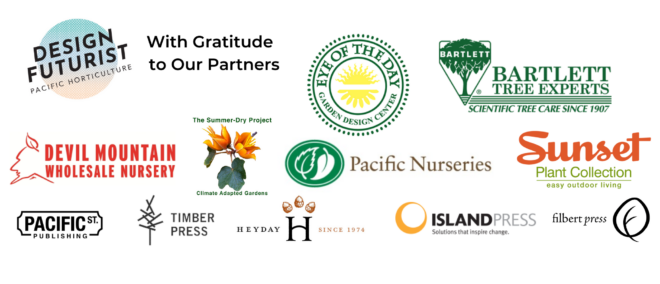
Design Futurist Award
Visit the 2024 Design Futurist Award Homepage






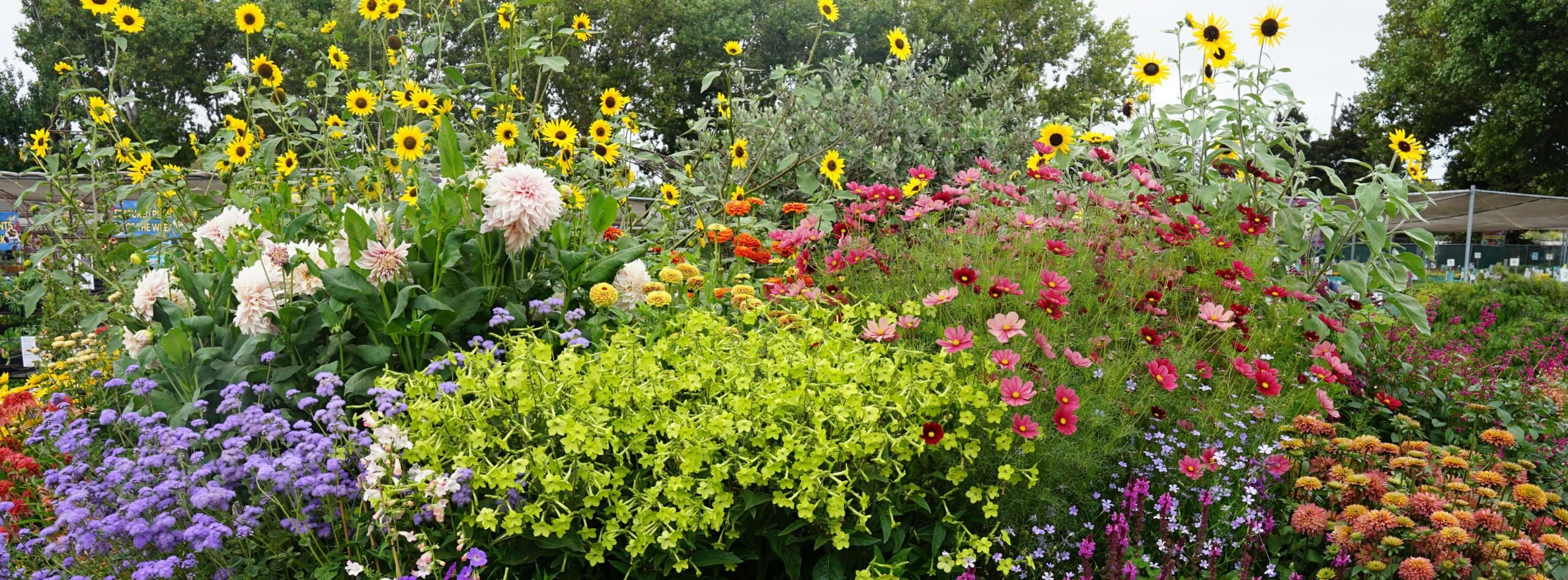

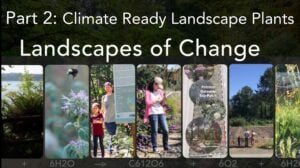
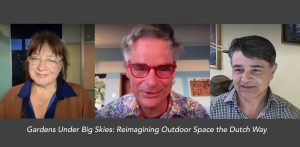
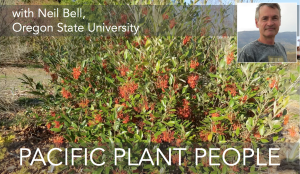
Responses